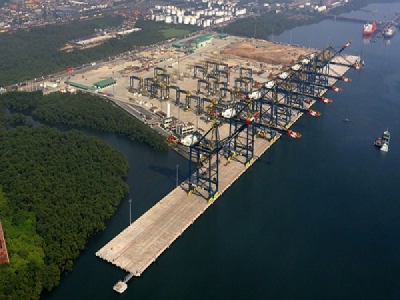
Posted on September 1, 2016
By Rob Ward, JOC.com
An 11-year high tide combined with beach erosion to shut down South America’s busiest port and cast doubt on plans to dredge to 17 meters (55.8 feet) so the port can handle larger ships.
The 30-hour shutdown caused delays for dozens of vessels and was the latest symptom of government failures to provide adequate and timely dredging to the country’s largest container gateway.
The Santos port authority, Codesp, has tried to address the situation and directed Dutch dredging outfit Van Oord to dredge the waters near Brasil Terminal Portuaria to 13.9 meters at low tide and 14.2 meters at high tide. That work has just wrapped up, ending draft restrictions to the terminal that were in effect in recent months. The draft has fluctuated between 13.6 meters and 13.9 meters for most of this year because of various delays.
A source close to the Embraport terminal said that vessels had also been delayed there and other container terminals were also affected by closure.
The flooding and struggle to get routine dredging completed are setbacks for Santos 17, an effort by Santos port interests to lobby local and federal governments to agree to dredging programs that would give the port of Santos a draft of 17 meters by the end of the year 2017.
The group, however, faces opposition from residents of the nearby Ponta da Praia area, where the exceptionally high tide caused flooding and damage to various buildings and car parks as a result of beach erosion.
Santos 17 says building a new 1,000-meter breakwater should help to protect the city beaches from further erosion, but local residents are demanding studies from local universities and think tanks before more dredging takes place.
“Ponta da Praia is suffering from a constant and cumulative erosion process,” Rodolfo Bonafim, a Santos-based climatologist who works for the nongovernmental organization Amigos de Agua told a local newspaper. “The more time that passes, the worse it gets.”
He said that dredging caused currents in the area to strengthen, exacerbating the erosion taking place as a result of climate change.
“That area of beach has already been suffering a reduced strip of sand for 40 years,” he said. “Now, these damages are accelerated, but there is no consensus that dredging is causing it. What we know is that with the deepening of the channel, the waves get higher, the magnitude of these waves increases, and erosion ends up being stronger.”
Santos handled 3.78 million twenty-foot-equivalent units in 2015.
Source: JOC





